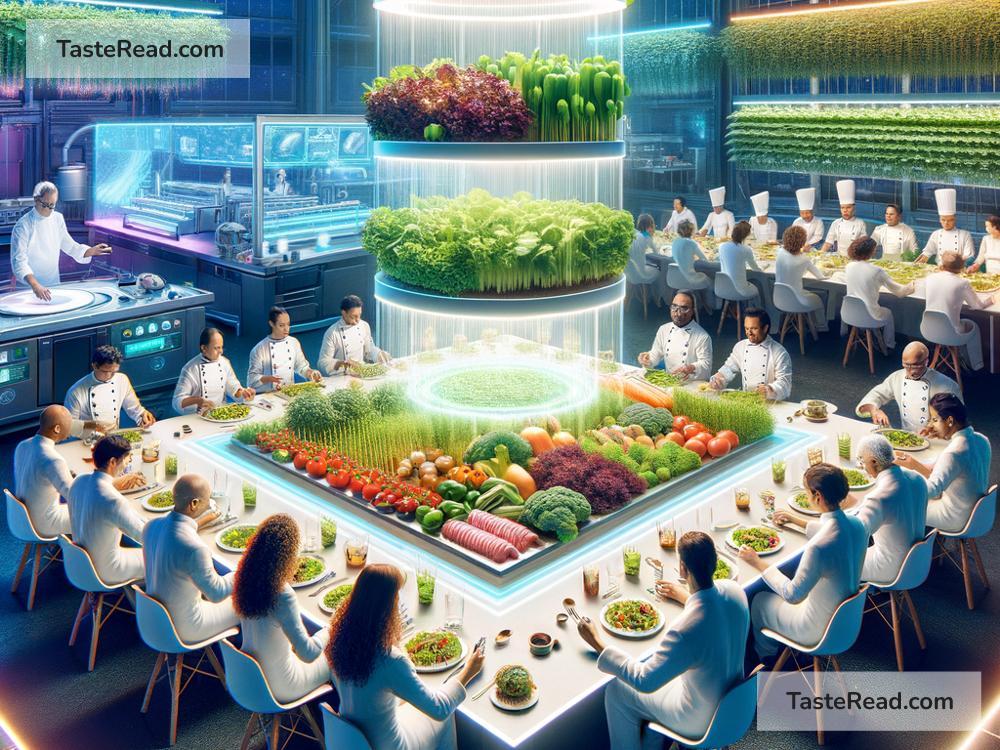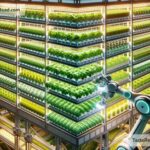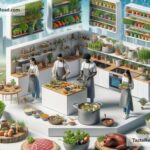The Future of Food and Systemic Collaboration: Working Together for a Better Tomorrow
Food is one of the most important parts of our lives. It keeps us strong, healthy, and happy. But have you ever wondered how food will look in the future? What will we eat? How will we grow it? And how can we make sure there is enough food for everyone? These are big questions, and solving them will require many people working together. In this blog, we’ll explore the future of food and the role of systemic collaboration in making food better for everyone.
The Challenges Facing Food Systems
Before we talk about the future, let’s take a look at the problems we’re facing today. The world’s population is growing fast. By 2050, there will be nearly 10 billion people on Earth, and we’ll need to produce more food than ever before. At the same time, climate change is making food production harder. Floods, droughts, and rising temperatures can damage crops and reduce the amount of food we can grow.
Another big problem is waste. Did you know that about one-third of all the food produced in the world is thrown away? Meanwhile, millions of people still go hungry every day. This is a sign that our food system isn’t working as well as it could.
Lastly, the way we produce food often harms the environment. For example, cutting down forests to grow crops releases carbon dioxide into the air. This makes global warming worse. Overusing fertilizers and pesticides can pollute rivers and kill wildlife. Clearly, we need new solutions to grow food in smarter, kinder ways.
The Future of Food
So, what will food look like in the future? Scientists, farmers, and innovators are already working on exciting ideas to make food systems better. Here are some examples:
-
Vertical Farming: Instead of growing food in big fields, vertical farms grow crops in stacked layers inside tall buildings. These farms use less space and water and can be set up in cities, making fresh food available to urban areas.
-
Alternative Proteins: Instead of relying so much on meat, people are exploring foods like plant-based proteins, lab-grown meat, and even insects. These options are healthier for the planet and can help reduce the environmental impact of livestock farming.
-
Smart Agriculture: Using technology like drones, sensors, and artificial intelligence, farmers can grow food more efficiently. These tools help farmers monitor their crops, water them only when needed, and reduce waste.
-
Food Recycling: Turning food waste into useful products is becoming more popular. For example, leftover food can be turned into fertilizer for plants or even converted into biogas to produce energy.
-
Personalized Nutrition: In the future, your diet might be tailored to your DNA and health needs. This could help people live longer, healthier lives by eating the foods that suit their bodies best.
What Is Systemic Collaboration?
Here’s where systemic collaboration comes in. To solve big problems like food insecurity, waste, and environmental harm, we need everyone to work together—farmers, scientists, governments, businesses, and communities. This is called systemic collaboration. It means looking at the whole system and finding ways for all parts to connect and work better.
For example, imagine a farmer growing vegetables. The farmer works with scientists to learn new techniques for growing food sustainably. Meanwhile, businesses invest in technologies to reduce food waste, and governments create laws that support eco-friendly farming. Communities also play a role by buying local produce or learning how to recycle food waste. When all these groups collaborate, the food system becomes stronger and more effective.
Why Collaboration Matters for the Future of Food
Here are some reasons why systemic collaboration is essential to fixing our food system:
-
Sharing Knowledge: Different groups bring unique skills to the table. Scientists understand how plants grow, farmers know practical farming methods, and governments can provide resources like funding and policies. Working together allows us to combine this knowledge for better solutions.
-
Scaling Solutions: A great idea at one farm can be expanded to many farms around the world if people collaborate. Collaboration helps spread good practices faster and more widely.
-
Solving Global Problems: Challenges like hunger and climate change affect the whole world. They need global solutions that come from teamwork across countries and cultures.
-
Building Fairness: Collaboration ensures that everyone’s voice is heard. Small farmers, rural communities, and underserved populations can benefit when they’re included in creating solutions.
How We Can All Play a Role
Even if you’re not a scientist or farmer, you can still contribute to the future of food. Here are some simple ways to help:
- Support Local Farmers: Buy fresh food from local markets to reduce transportation emissions and support smaller producers.
- Waste Less Food: Plan your meals, save leftovers, and only buy what you need.
- Learn More: Educate yourself about food systems and share that knowledge with others.
- Get Involved: Join community gardens or food-sharing programs to help grow or distribute food.
Conclusion
The future of food is full of possibilities, but it’s also full of challenges. To build a food system that is sustainable, healthy, and fair for everyone, we need systemic collaboration. When farmers, scientists, businesses, governments, and communities work together, amazing things can happen. With smart ideas and teamwork, we can create a future where no one goes hungry, the environment is protected, and food is grown in ways that are better for both people and the planet.
Food is not just something we eat—it’s something that connects us all. Let’s work together to shape its future for the better!


